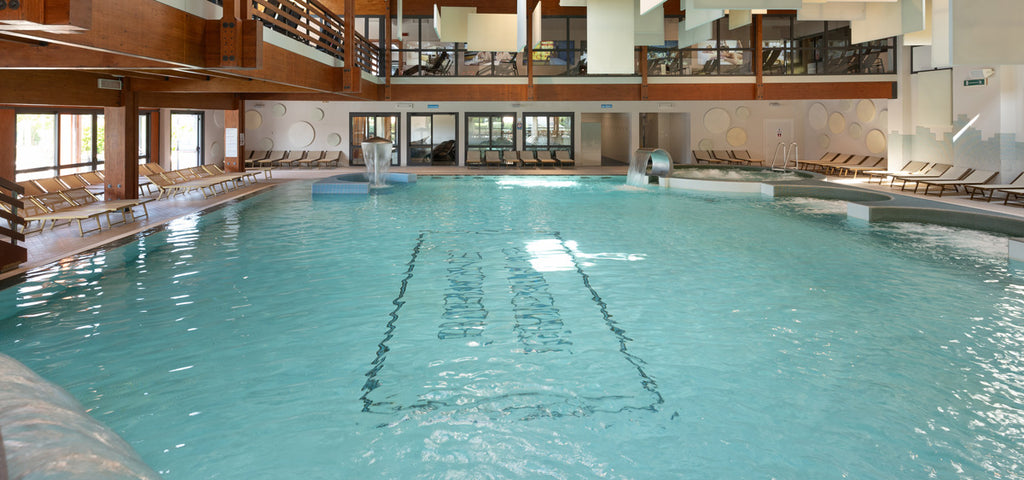Thermal Water

The thermal water used at Bibione Thermae flows at 52 ºC from a spring located in the hinterland of Bibione at a depth of over 500 metres. Based on temperature and the fixed residue, this water is classified as hyperthermal, mediomineral, and according to D.L.105 of 25.01.92 is classified as alkaline bicarbonate, sodium fluoride. Thanks to its peculiarities, the thermal water of Bibione Thermae is recognized for its therapeutic properties also by the Ministry of Health (Decrees n. 2918 and 2950 of 1996), therefore some cycles of treatment at the Spa of Bibione are affiliated with the National Health Service (NHS).

The discovery and potential of the Venetian thermal waters of the lower Po Valley are due to the geological investigations initiated by AGIP between 1960 and 1970 aimed at the search for hydrocarbons, continued by distinguished scholars of the C.N.R. and various Italian universities. These researches have led to the discovery of the last great water resource of Bibione: the hyperthermal waters that spring from the Mesozoic carbonate base, the use of which allowed the realization of the Spa and impressed an important turning point in the image and offer of the services of the seaside resort of Bibione.
The geological investigations have detected a geothermal anomaly that has its apex in the village of IV Bacino in the Municipality of San Michele al Tagliamento (VE), 5 km north of Bibione, at a depth of about 500 m and at a temperature of 52 ºC. The aquifers are normally fed by infiltration rainwater, whose recharge basin covers a large area up to the Alpine mountains. The underground water outflow, with a North-South trend, determines, due to the presence of clayey levels, the pressurization of the aquifer which therefore assumes an artesian character with pressures at the head of the wells between 1 and 3 atmospheres.
The thermal waters of Bibione Thermae have presence of microelements that attest to the contacts with the underlying Mesozoic limestone formation. Since the early 1980s, geochemical analyses of thermal waters have been commissioned from various institutes, including the C.N.R. of Pisa, the University of Padua and Trieste. The hydrogeochemical classification of the samples was carried out using the Piper diagram through which it was possible to identify the uniformity of the water coming from the two wells and their classification to the "alkaline bicarbonate" type, more in particular "alkaline sodium bicarbonate".
In literature, bicarbonate is defined as the water that mainly has the anion bicarbonate HCO3 compared to all other anions. Among the bicarbonates are distinguished the alkaline ones by the prevalence of sodium with catons Na.
The thermal waters are bacteriologically pure and, in relation to the amount of dissolved minerals, are classified as medium-minerals.
Through a more detailed analysis of the relationships between the various ions present in the aquifer, carried out with correlation diagrams of the isotopic geochemical investigation and that of dissolved gases, it has been established that the samples exhibit characteristics similar to those of thermal waters in other areas belonging to deep thermal circuits (Sedea 1995), providing further evidence of the deep hydrothermal circulation and to guarantee the potential and durability of the hydrothermal resource.
The chemical analyses are currently carried out by the A.R.P.A.V. (Regional Agency for Prevention and Environmental Protection of Veneto), an accredited body for the analysis of samples of thermal waters of the Veneto Region.